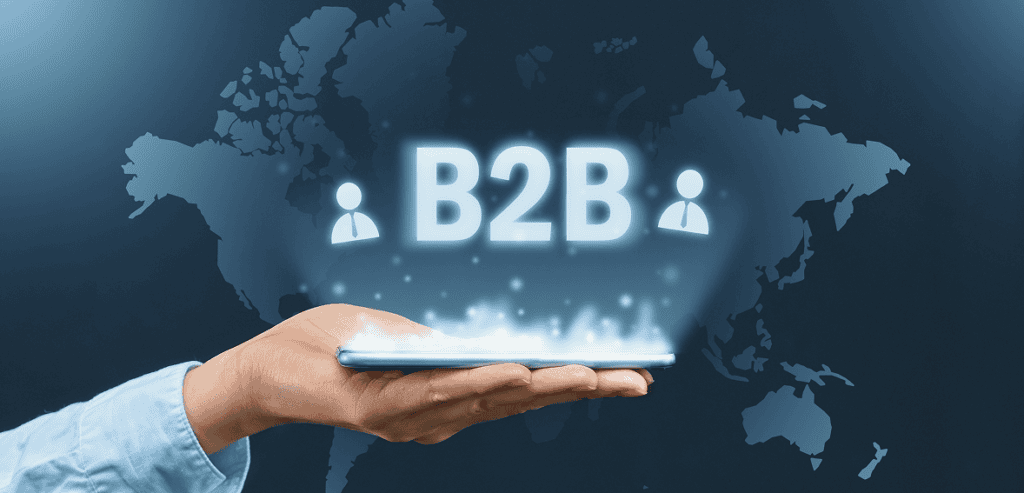
By Carol Sherman July 8, 2025
As digital transformation reshapes how businesses buy and sell, one area undergoing rapid evolution is payments. Traditionally, B2B transactions operated on net terms—buyers would receive an invoice with 30, 60, or even 90 days to pay. While this model supported business cash flow, it lacked speed, automation, and digital integration. That’s where B2B BNPL—or Business Buy Now Pay Later—comes in.
In this article, we explore how net terms fintech providers are redefining B2B payments. From understanding the core concept to exploring real-world benefits and implementation strategies, this guide is designed to offer businesses a complete view of B2B eCommerce payments in the modern age.
The Concept of B2B BNPL
The B2B BNPL model is essentially a technology-driven version of traditional trade credit. Instead of sending out manual invoices and waiting weeks or months for payment, sellers can now offer automated net terms through digital providers. When a buyer opts for BNPL at checkout, the provider immediately pays the seller. The buyer then receives an interest-free payment window—typically 30, 60, or 90 days—before they need to settle the balance.
This solution is often referred to as “net terms as a service.” Companies like TreviPay, Resolve, and Two specialize in offering such services, ensuring that suppliers get paid upfront while buyers enjoy deferred payments. The experience is built seamlessly into the digital checkout process of B2B eCommerce platforms, allowing traditional invoicing practices to evolve into real-time, automated solutions.
What sets business buy now pay later apart is the underwriting and risk evaluation that happens behind the scenes. Instead of putting the credit risk on the supplier, BNPL providers handle the vetting of buyers, run credit checks, and ensure collection. This makes the model scalable, secure, and attractive to a wide range of industries.
The digital version of net terms is not just about faster payments. It’s also about better customer experiences. With just a few clicks, approved businesses can complete a purchase without entering credit card details or waiting for invoice approvals. For suppliers, the integration means faster revenue recognition and cleaner balance sheets.
Benefits to Suppliers and Buyers

The impact of B2B BNPL can be profound for both sellers and buyers. For suppliers, the biggest win is improved cash flow. They receive payment immediately from the BNPL provider, removing the burden of collections, delays, and bad debt. This improves liquidity, reduces administrative workload, and makes the business more agile.
Another major advantage is conversion. In B2B eCommerce, offering net terms at checkout has been shown to reduce cart abandonment significantly. When business buyers know they can defer payment without interest, they are more likely to complete the transaction. In some cases, conversion rates improve by as much as 40 percent. This directly translates to higher revenue.
Business buy now pay later also enhances customer satisfaction. Buyers are often constrained by internal approval processes or limited budgets. Having the ability to defer payments gives them flexibility, especially when managing large or recurring purchases. For growing businesses, this flexibility can be the difference between acting on an opportunity or missing it due to short-term cash flow constraints.
On the buyer’s side, B2B BNPL provides a bridge between procurement and financial planning. Businesses can take advantage of early-bird pricing, bulk discounts, or seasonal offers without tapping into working capital or credit lines. Since most BNPL solutions come with interest-free windows, buyers avoid high-interest charges and maintain better control over their cash flow cycles.
For both parties, net terms fintech solutions also introduce transparency. With dashboards, real-time credit limits, automated reminders, and payment tracking, the entire process becomes more efficient and less prone to error. This kind of visibility is invaluable in high-volume or high-value transaction environments.
Implementing B2B Financing Options
For businesses ready to offer B2B BNPL, implementation starts with selecting the right provider. Companies like Resolve, TreviPay, Two, and other net terms fintech platforms offer APIs or e-commerce plugins that integrate directly with checkout flows. These tools are designed to work with popular B2B platforms like Magento, Shopify Plus, BigCommerce, and custom-built systems.
Once integration is complete, sellers can decide which customers are eligible for business buy now pay later terms. This eligibility is often controlled through onboarding processes and credit checks conducted by the BNPL provider. Only approved buyers see the net terms option at checkout, which minimizes risk and ensures that terms are only extended to financially sound businesses.
There are several factors to consider before rolling out B2B eCommerce payments with BNPL:
Credit Assessment and Approval Flow
BNPL providers handle the heavy lifting here, evaluating buyer creditworthiness in real time. However, businesses should understand the approval criteria, which may include company age, revenue, payment history, and industry type. This ensures only qualified customers can use the net terms offering.
Service Fees and Margins
Most BNPL providers charge a fee for their services, usually a small percentage of the transaction. Sellers should assess whether their margins can absorb this cost. In many cases, the increase in order volume and customer retention offsets the service fee, but it’s important to run the numbers.
Industry and Buyer Fit
Not all industries or buyer profiles are ideal for B2B BNPL. For instance, highly regulated sectors or those with unpredictable cash flows may pose a higher risk. Businesses should align with BNPL partners that understand their industry and offer customizable underwriting models.
Integration and Support
Seamless technical integration is essential. Whether using an API or plug-in, the solution must work flawlessly within the company’s existing checkout, invoicing, and accounting workflows. It’s also important to assess customer service and support offered by the BNPL provider.
A Shift in How B2B Operates

Traditionally, B2B transactions were built on trust. Invoices were sent by email or post, payments were tracked on spreadsheets, and follow-ups required manual effort. With net terms fintech, that entire system is now digitized. For sellers, this shift not only reduces overhead but also modernizes the brand perception.
Buyers expect consumer-like experiences even in B2B settings. They want speed, transparency, and flexibility. By offering business buy now pay later, sellers meet these expectations and gain a competitive edge.
Many B2B sellers have long relied on offering credit informally, extending net-30 or net-60 terms without a formal process. This creates exposure to credit risk, delays, and friction. B2B BNPL addresses these issues head-on. It introduces automation, compliance, and scalability to a system that previously depended on relationship-driven approvals.
For fast-growing startups and established enterprises alike, B2B eCommerce payments powered by BNPL present a chance to reimagine how they engage customers, manage cash flow, and close sales.
The Future of Net Terms
Looking ahead, B2B BNPL is expected to expand its reach across more industries. Logistics, manufacturing, wholesale, SaaS, and healthcare are already exploring or adopting these models. With AI-driven credit scoring and deeper ERP integrations, the future promises even more accurate assessments and frictionless approvals.
Moreover, net terms fintech providers are increasingly offering modular solutions. Businesses can customize payment terms, set buyer limits, and even brand the BNPL experience as their own. These white-labeled options give sellers full control over the customer experience while enjoying the benefits oxf outsourced risk management.
We’re also likely to see tighter integration between BNPL and supplier financing, where businesses not only get paid upfront but also access early-payment discounts, factoring, or invoice financing—all through a single platform.
Making the Right Move

For any B2B company considering business buy now pay later, the first step is to understand your customer’s buying behavior. Do they value flexibility? Are long sales cycles limiting conversions? Would automated net terms improve retention? The answers to these questions can guide whether BNPL is the right fit.
Next, evaluate your internal infrastructure. Do you have the eCommerce architecture to support BNPL integration? Are your finance and sales teams aligned on how credit terms should be offered and managed? Choosing the right net terms fintech partner is important, but internal readiness is just as critical.
Finally, think of BNPL as part of a larger digital strategy. The goal isn’t just to extend credit. It’s to build a frictionless, customer-first purchasing journey that keeps your business competitive and future-ready.
The Role of B2B BNPL in Reducing Operational Load
One of the lesser-discussed benefits of B2B BNPL is the way it reduces internal workload for suppliers. Traditional net terms models require manual credit checks, invoice tracking, follow-up emails, and collections. These processes can be time-consuming and prone to delays or errors. With net terms fintech providers, much of this burden is lifted. The BNPL provider handles buyer vetting, payment reminders, and collections. This allows the finance and accounts teams to focus on higher-value tasks instead of chasing payments.
Additionally, these platforms offer real-time dashboards, automated reconciliation, and integration with accounting software. That means sellers gain full visibility into receivables without the hassle of spreadsheets and disjointed workflows. For companies dealing with high-volume transactions or international clients, the automation that BNPL brings is a major time-saver. It reduces late payments, administrative costs, and cash flow uncertainty.
This shift toward operational efficiency is crucial in today’s digital-first environment. Businesses looking to scale can’t afford outdated credit workflows. As business buy now pay later models become more mainstream, they will increasingly be viewed as a strategic upgrade, not just a financing tool.
Impact of BNPL on B2B Customer Experience
Customer experience is a key driver in both B2C and B2B eCommerce. Business buyers now expect the same ease, speed, and flexibility they enjoy in consumer shopping experiences. This includes streamlined checkout processes, instant approvals, and multiple payment options. Offering B2B BNPL directly at checkout creates a smoother, more satisfying buyer journey.
When buyers are offered the option to defer payment without interest, it signals trust and partnership. It also removes friction at a critical point—the decision to finalize the purchase. Companies that provide flexible terms often stand out among competitors, especially in industries where buyers are under pressure to manage limited budgets or procurement cycles.
Moreover, a modern BNPL solution improves communication. Buyers get automatic updates about due dates, payment reminders, and available credit. This transparency builds trust and reduces disputes. It also makes businesses more likely to return, knowing that their payment process is clear and easy to manage.
As expectations evolve, the ability to offer business buy now pay later will be seen not just as a payment feature, but as part of a superior customer service strategy.
Comparing BNPL to Credit Cards in B2B Transactions
While business credit cards are a common financing tool, they don’t always serve the unique needs of B2B eCommerce payments. Credit limits may be too low for large or recurring purchases. Interest rates can be high if balances aren’t paid in full. And the process of onboarding a new buyer with a credit card can be limiting, especially for companies outside traditional banking networks.
B2B BNPL, on the other hand, offers purpose-built credit tailored for business transactions. Unlike revolving credit, BNPL terms are fixed, clear, and interest-free for a set duration. This is often more manageable for businesses planning around cash flow cycles or awaiting customer payments themselves. It also avoids the complexity and cost of high-interest fees associated with cards.
For sellers, BNPL can also be more beneficial than accepting cards. Transaction fees with credit cards can range from 2 to 4 percent, and chargebacks pose additional risk. With net terms fintech solutions, the provider often assumes the credit and fraud risk while still paying the seller upfront. This makes BNPL a secure and cost-effective alternative that aligns better with B2B purchasing behavior.
Scaling with BNPL: Opportunities for Growth-Oriented Businesses
For growth-stage businesses, business buy now pay later can be a catalyst for expansion. When working capital is limited, BNPL allows companies to invest in inventory, technology, or marketing while deferring payment. This creates room for strategic investments without draining cash reserves. For suppliers, it means attracting more buyers who may otherwise hesitate due to immediate payment constraints.
BNPL also supports larger order sizes. When buyers aren’t restricted by current liquidity, they are more likely to place bigger orders or increase purchase frequency. This leads to higher average order value and stronger customer lifetime value. In competitive sectors, this advantage can be significant.
Moreover, BNPL makes entering new markets easier. Startups and SMEs trying to break into new regions or industries often struggle to offer net terms because of credit risk. With B2B BNPL, sellers can confidently extend terms through a fintech partner who assumes the risk.
This scalability—both in terms of buyer base and transaction volume—makes B2B eCommerce payments with BNPL more than a financing tool. It becomes a growth enabler, helping businesses build relationships, boost revenue, and operate more competitively in a fast-moving digital marketplace.
Conclusion
B2B BNPL is much more than a payment option. It’s a strategic tool for growth, retention, and digital transformation. By bridging the gap between traditional net terms and modern checkout experiences, business buy now pay later unlocks value for both suppliers and buyers. With the help of specialized net terms fintech platforms, businesses can offer fast, flexible, and secure payment options that align with the expectations of today’s buyers.
In a world where B2B eCommerce payments continue to evolve, offering net terms in the digital age isn’t just an option—it’s a necessity.
FAQ
Q1. What is B2B BNPL and how does it differ from traditional net terms?
B2B BNPL (Business Buy Now Pay Later) is a modern, tech-enabled version of trade credit. Unlike traditional net terms where the seller waits 30 to 60 days for payment, B2B BNPL providers pay the seller upfront and give the buyer an interest-free period to repay. This digitized approach eliminates manual invoicing, speeds up transactions, and reduces the seller’s financial risk.
Q2. How do B2B BNPL providers manage credit risk?
Net terms fintech platforms like Resolve or TreviPay conduct credit checks, monitor buyer risk, and handle collections. By assuming the credit risk themselves, they relieve suppliers of the burden of chasing payments or dealing with defaults. These providers typically approve only verified businesses, ensuring secure and reliable use of deferred payment options.
Q3. Is B2B BNPL suitable for all industries?
While B2B BNPL is gaining traction across many sectors, it may not be ideal for industries with high-risk buyers or irregular cash flows. It works best in B2B eCommerce environments where buyers have predictable purchase cycles and suppliers need to improve cash flow without sacrificing credit flexibility.
Q4. How can a business integrate B2B BNPL into its checkout process?
Businesses can integrate business buy now pay later options using APIs or eCommerce plugins provided by BNPL platforms. Implementation typically includes eligibility settings, credit assessment workflows, and customized payment terms. Most providers offer support for platforms like Shopify, Magento, or BigCommerce, making integration seamless for sellers ready to scale digitally.